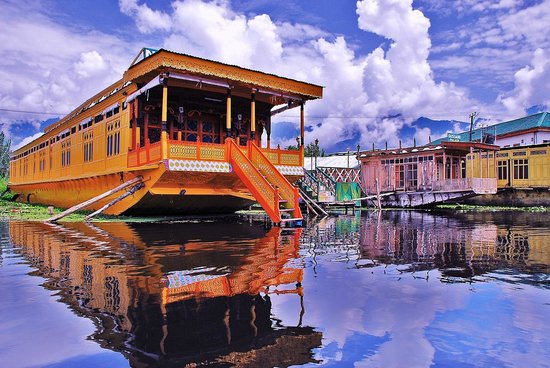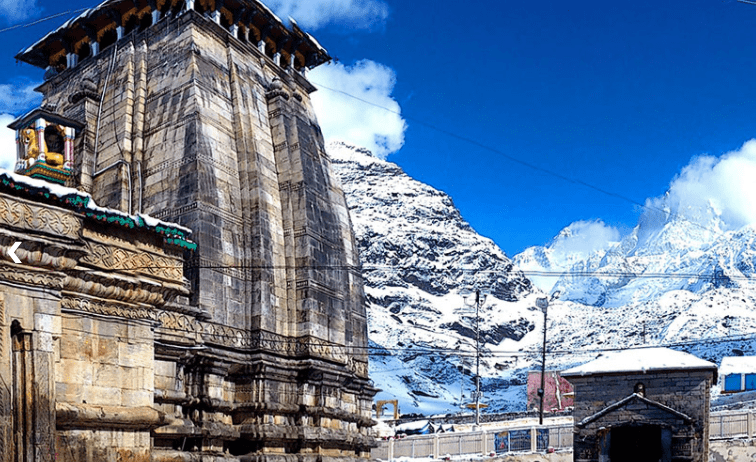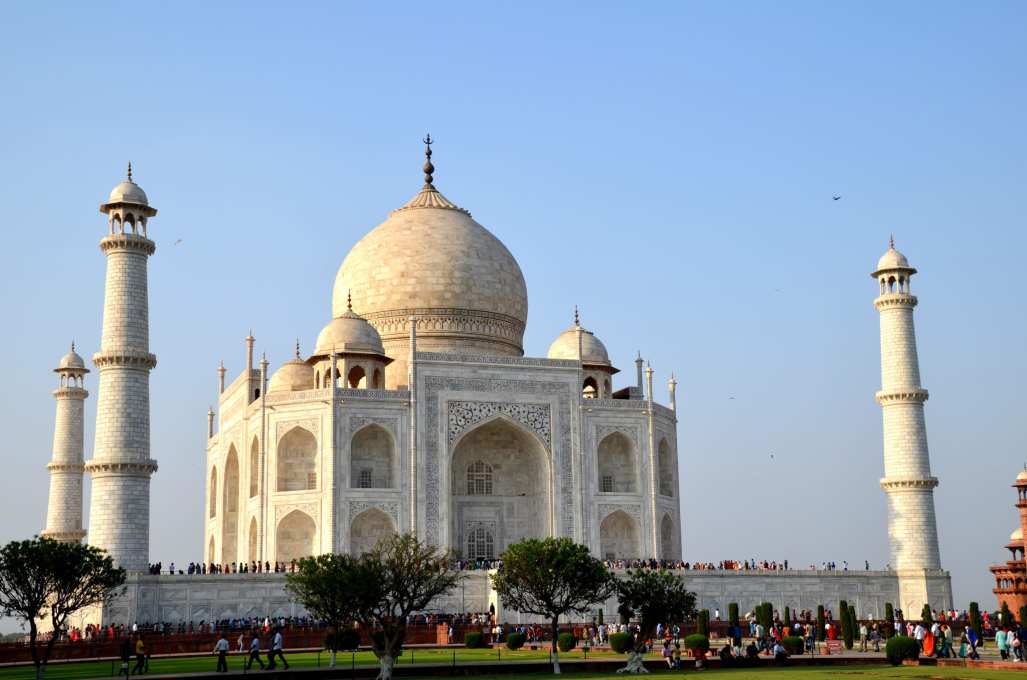Updated on July 30th, 2023
If there is a heaven on earth, it is here; it is here; it is here! – beautifully quoted by Emperor Jahangir on Kashmir back in the 17th century, the quote holds true even today. Words of quote are Agar firdaus bar roo-e zameen ast, Hameen ast-o, hameen ast-o, hameen ast! When you visit Kashmir, you feel nothing is exaggerated in this statement. The beauty of Srinagar is fascinating to tourists for centuries with its beautiful picturesque Himalayan backdrop. It always fascinated me to visit this paradise. In December 2018, we planned a family trip. We opted to go there by air from Amritsar to Srinagar.
In the past few decades, Kashmir is portrayed with colors of terror. Media reports have played a negative role. But I experienced few tales are just in media and Bollywood stories, not on ground realities. In reality, where ever you go in Kashmir, you find people who are very gentle and soft-spoken.
The beauty of the Kashmir Valley is beyond description. With the gushing rivers, shiny waterfalls, picturesque surroundings, and lush green forests, it has always appealed to tourists. So many writers, filmmakers, and poets described the beauty of Kashmir as unmatched. Srinagar is in the heart of Kashmir, so the beauty of Srinagar is also beyond description. Here I am sharing my expressions about this beautiful land.
Shikaras & House Boats of Dal Lake
While in Srinagar, you can’t ignore the role of Shikara in day-to-day life. These small boats are a very important part of Kashmiris living in Srinagar. In Dal Lake, these boats are like lifelines, helping people to move from one place to another. Right from routine things of life, like vegetables, fruits, bakery goods, dry fruits, and even services like doctors and tailoring, you will find everything on these small boats.

Tourists enjoy rides on these boats. These rides take you to breathtaking views of the lake and its surroundings. I still remember the joyous ride we had. I suggest going for a ride during the evening so that you can enjoy the reflections and changing colors of the skyline with snow-clad mountains. We also enjoyed the eatables offered by other sellers’ boats. We clicked a few memorable moments. Dal Lake’s splendor is unmatched in terms of natural beauty. Spending evenings floating in Shikara and buying eatables and other things make moments unforgettable lifelong. You can relish the lip-smacking authentic Kashmiri delicacies. Just relax and take this time to rejuvenate your mind and soul.
Spend a few nights in House Boats
Spending a few nights in a houseboat is one of the best things to do while you are in Srinagar. It cannot be so luxurious as staying in a five-star hotel but still will be a memorable experience. We can say houseboats are a perfect blend of comfort & luxury at an affordable price. Any trip without staying in a houseboat cannot be completed. Proximity to nature will certainly make your trip a lifelong memory. There are a lot of boats for you to choose from, few with all facilities.



During my trip in April 2018, we stayed in a houseboat named King’s Boat for almost one week. It was systematically and beautifully managed, nowhere less than a pleasant hotel. Everything about the boat was royal – from the decor to the view to the service. We enjoyed ourselves a lot with all comforts. Mornings and evenings at the lake make your soul and mind relaxed and such moments always remain fresh in your memories.
Our Experience at Houseboat
Each morning, we would embark on a small boat ride to explore the city’s fascinating attractions. The gentle ripples of the lake and the picturesque surroundings added an extra touch of magic to our daily journeys. The hospitality on the houseboat was exceptional. Shany, the houseboat boy, treated us like royalty, ensuring our every need was met. From the warm welcome to the personalized service, we felt pampered throughout our stay.
One of the highlights of the trip was the delicious Kashmiri cuisine served onboard. Every meal was a delightful adventure of flavors, introducing us to the region’s rich culinary heritage. We couldn’t resist trying various local delicacies, leaving our taste buds truly satisfied. The April weather in Srinagar brought occasional rainfall, which only enhanced the beauty of our surroundings. The raindrops dancing on the lake’s surface created a serene ambiance, and we found ourselves lost in the soothing rhythm of nature.
In the evenings, we would relax on the deck of King’s Boat, savoring the breathtaking sunsets over the horizon. The combination of the setting sun, the calming waters, and the distant calls to prayer created an atmosphere of peace and reflection.

Relaxing on the deck and watching the mesmerizing sunrise and sunset will be a wonderful experience. I still remember the quality and taste of food, veg & non-veg, served to us by the houseboat boy, Shany, from their own kitchen. He did everything on the boat, from keeping it clean to making sure our meals were served on time. He was also our guide to other places in Kashmir.
Going back in the history of houseboats
Going back to the origin of the concept of houseboats in Srinagar goes back to the British period, when the king of Kashmir Gulab Singh didn’t allow British people to buy land or do any construction activity in the valley. Then small houseboats were constructed to keep on Dal Lake and in those days, these small houseboats were moving in the water. These days, houseboats are not moving in lake water. They anchored these to one side of the lake. All basic amenities that a traveler would need, like electricity, toilets, and hot & cold water, are available.
Lotuses and Floating Market of Dal Lake

While being on dal lake, you can experience shopping from the floating market. This market is a famous tourist attraction in Srinagar. Tourists and locals buy daily needs, including fruits, vegetables. Kashmiris sell their produce at floating markets, which they get from their floating gardens. There are many floating gardens and vegetation that may astonish you. This is the primary source of income for farmers and lake dwellers. This wonderful scene also portrays the life of local Kashmiris living here, giving you an insight into the Kashmiri way of life. Another beautiful thing is countless blooming lotuses and lilies greet you on either side of Shikara when you go on an early morning trip to the lake.
Another memorable experience was the shikhara shopping. These ornate wooden boats adorned with vibrant handicrafts and souvenirs added a touch of colorful elegance to the lake. We couldn’t resist exploring the floating markets and purchasing unique treasures to cherish as mementos of our trip.
The beautiful hill town of Gulmarg
While in Srinagar, you can’t miss the beautiful hill town of Gulmarg. With its snow-covered slopes, it is globally known for Ski and other winter activities. There are so many Ski resorts offering training courses to adventure seekers.

Another attraction there is a cable car, that takes visitors to Mt Apharwat from where you can enjoy a panoramic Himalayan view. Asia’s largest and highest and world’s second-largest and second-highest cable car project. Enjoying cable car rides is perfect for families, romantic couples, and adventure seekers. The scenic views of mountains and valleys during the cable car ride are also unforgettable and unmatched. Gulmarg town is the starting point of the ride and the top of Apharwat peak is the endpoint. Kongdoor is the center point in between. Kongdoor Mountain, from which skiers have access to many easy runs through the trees and to the groomed but narrow slopes.

Whether you try Ski on a sloppy track of snow or just watch others doing so, a Gulmarg winter is definitely one of the most special experiences. If you are fond of this adventurous activity, then the best time to go is December to April. Still, it depends upon snowfall levels.
Valley of Shepherds, Pahalgam
Another beautiful place to visit, while you are in Srinagar, is Pahalgam. We also know it as the “Valley of Shepherds”, in the Anantnag District of Kashmir. On the banks of River Lidder, this beautiful place is full of lush meadows, verdant forests, sky-kissing mountains, and apple orchards. There are a lot of spots for camping, sightseeing, trekking, pilgrimage yatra, whitewater rafting, and fishing. We enjoyed a day at this beautiful place.


We all are well aware of Bollywood’s unending love for Kashmir and its surroundings. The famous movie of Sunny Deol was shot in Pahalgam and interestingly the valley is renamed Betaab Valley, on the name of the movie. Betaab Valley was previously known as Hagan Valley or Hagoon. The Betaab Valley is popular amongst trekkers as it serves as a base camp for many treks that go further into the mountains.

Zorbing in Pahalgam
Zorbing is a recreational sport that is performed in a big inflated transparent ball. They do Zorbing on slightly hilly slopes or even an artificially made surface. While in Pahalgam, you can simply ask for zorbing. Baisaran, Pahalgam is a valley where you can try this adventure’s fun game. This is a perfect place for this activity, surrounded by lush green meadows and snow-clad mountains.

Other places in India where you can do Zorbing are Khajjiar, New Delhi, Manali, and a few more. In the last, I feel Kashmir and in particular, Srinagar has a lot to offer to make a vacation trip, life long memory. It is one of the best places to travel in India.
During our trip to Srinagar, Bhawana, Deep, Atinder, and Rajni were all part of the adventure, and every single one of us had an absolute blast. From exploring the city together to staying on the charming King’s Boat, we shared laughter, unforgettable moments, and a true sense of camaraderie. The joy of experiencing the delicious food, the enchanting rainy environment, and the fun shikhara shopping was amplified by the wonderful company we had. It was truly a trip filled with joy and cherished memories for all of us!











